WHO’S IN CHARGE HERE?--On November 17, the Planning Department announced its latest proposal to change the City’s second dwelling unit (SDU) ordinance. Ostensibly proposing revisions merely to comply with recent state law mandates, the Department has failed to tell City decision-makers and the public that its proposed changes go far beyond what is needed to meet those mandates. The Department’s proposal would fundamentally alter Los Angeles’ existing ordinance, defying the City Council’s recent directive that the Department not propose further changes without first following a “comprehensive, open, transparent process.”
The Department’s November 17 proposal once again reflects its drive to encourage more SDU development – and its insubordinate approach to the City Council. Apparently fixated on allowing oversized and poorly located second units (so-called “granny flats” or accessory dwelling units) in single family residentially zoned neighborhoods throughout the City, the Department again seeks to impose its policy objectives in defiance of a unanimous City Council.
The Planning Department’s First Attempt: An Administrative Decree Rejected by the Superior Court.
This short recap puts this latest Planning Department effort in perspective: In 2010, the Planning Department issued an administrative decree that the State’s “default” standards would apply citywide, rather than the City’s SDU ordinance. The State standards permitted large, family-sized (up to 1,200 square feet) units on virtually any residential lot in the city. By contrast, the City’s SDU ordinance established standards to protect neighborhoods from the negative impacts of inappropriate second unit development. These standards include a 640 square foot maximum for detached SDUs, prohibitions on SDUs in Hillside areas, on substandard streets and in equine-keeping districts, and a minimum lot size requirement to prevent overcrowding.
In February of this year, the Superior Court ruled that the Department’s 2010 decree unlawfully ignored the City’s adopted SDU ordinance.
During the five-year period before the Court’s ruling, nearly half of all issued SDU permits unlawfully exceeded the City’s 640 square foot maximum dimension allowed for “granny flats,” instead often reaching 1,200 square feet, the size of many primary residences.
The Planning Department’s Second Attempt: The Repeal of the City’s SDU Ordinance Thwarted by the City Council.
Following the Superior Court decision, the Department proposed in May that the City Council should fully repeal its protective second unit ordinance so the State’s lenient “default” standards would automatically apply. Notwithstanding that the Department clearly had other options available, the Department vigorously advocated repeal as the “only feasible” alternative and as legally necessary, and it placed the proposed repeal on a “fast track” allowing little public input.
Fortunately, Neighborhood Councils and community groups learned about and strongly opposed the Planning Department’s ill-advised repeal proposal and showed that the repeal was not legally necessary. Most importantly, they showed that the influx of large second units would severely detract from the quality and character of many single-family neighborhoods.
On August 31, 2016, after a long closed session, the City Council unanimously rejected the Department’s repeal proposal. Instead, it adopted a motion – known as Motion 19A – proposed by Councilmembers Ryu, Koretz, Martinez, Blumenfield and Krekorian and seconded by Council President Wesson and PLUM Chair Huizar. It ordered the Planning Department to initiate proposed revisions to the current SDU standards only after “conducting a comprehensive, open, transparent review.” The Council also directed the Department to provide decision-makers with customized options that “tak[e] into account the unique characteristics of each geographic area of the city.”
The adoption of Motion 19A was a victory for the hundreds of Neighborhood Council members and community groups who stood up to oppose the Planning Department’s irresponsible attempt to repeal our SDU regulations and default to the State’s permissive standards. The opponents of the repeal effort breathed a great sigh of relief that Motion 19A clearly expressed the Council’s unanimous direction to the Planning Department to retain the existing SDU protections and to recommend any changes only after the Planning Department conducted “a comprehensive, open, transparent” process.
Sadly, the activists’ sense of satisfaction with the adoption of Motion 19A did not last long. A month later, the Planning Department was presented with another opportunity to propose amendments to the City’s SDU ordinance. Rather than follow the Council’s clear direction to keep the existing standards in place, the Department could not resist the chance to amend the City’s ordinance to encourage more and bigger SDUs.
The Planning Department’s Third Attempt: AB 2299 Opens the Door and the Department Pounces.
On September 27, the Governor signed AB 2299, which has two main features. First, the bill requires any City whose SDU ordinance includes discretionary permit approval procedures (e.g., Los Angeles) to amend its ordinance to delete those provisions. Second, to further encourage SDUs, AB 2299 requires that all local SDU ordinances include certain mandatory provisions to remove barriers to SDU development involving requirements for second unit parking, setbacks and passageways. To ensure that these requirements are not ignored, AB 2299 penalizes cities that do not act diligently. If the ordinance is not amended by December 31, the city’s second unit ordinance will temporarily become “null and void” and the State’s “default” standards will apply until the city adopts a complying ordinance. The Legislature intended for cities to have sufficient time to make these straightforward changes by December 31 in order to avoid “null and void” status.
Now, in light of the City Council’s unanimous rejection of the Department’s repeal proposal and its explicit directions in Motion 19A, you might expect the Department to do as instructed and respond with a simple amendment following AB 2299’s straightforward requirements. But the Department’s drive to promote more and bigger SDUs in our neighborhoods simply will not allow it to follow the City Council’s direction.
To make matters worse, the Department waited until November 17 to unveil its profound changes, and it then scheduled a December 15 hearing for the Planning Commission to consider them. This schedule, of course, makes it effectively impossible for the Council to consider and act on the proposed ordinance by year end, thereby ensuring that the Department’s much favored “default” standards will again apply citywide until the City Council acts.
The Department’s last minute draft ordinance does not simply include the minimal revisions mandated by AB 2299 revisions: it proposes major non-mandated changes in Los Angeles’ second unit standards with no transparency, no public outreach and involvement, no explanation or discussion of the rationale for the proposed changes, and no alternatives customized for the City’s diverse neighborhoods and Council Districts. As it did in May, the Department supports its latest proposed changes with highly misleading explanations.
The Department’s Proposal Greatly Reduces the Protected “Hillside Area.”
For example, the Department published a Background/FAQ with its proposed ordinance (available on its website) that asserts that the proposed ordinance would still continue LA’s current adopted standard that second unit construction will “not be allowed in Hillside areas.” Actually, the Department’s proposal would dramatically change the definition of “Hillside area” from the broad area designated by LAMC section 91.7003 in the existing ordinance to the far smaller area defined by the Baseline Hillside Ordinance (BHO), LAMC section 12.03. About one-third of the presently protected Hillside areas – over 50,000 lots – would now be made available for SDU development by the Department’s proposal.
The Background/FAQ not only fails to disclose the dramatically smaller “Hillside area” in which the prohibition on second units would apply, it provides no rationale for doing so. Researching the BHO shows that the Council chose to apply is comprehensive development restrictions only to Hillside lots with “strong” to “extreme” slopes. But why should the very different neighborhood protections against the negative impacts of second unit development currently in effect in Hillside areas like Cheviot Hills be removed simply because that neighborhood’s slopes are somewhat less that “strong” to “extreme.”
The Department’s Proposal Allows SDUs on Narrow Substandard Streets despite Limited On-Street Parking.
From the time the City’s SDU standards were first adopted, they have precluded second unit development on lots fronting narrow substandard public streets – “where the width of the adjacent street is below current standards.” But again, without any discussion or explanation in the Report, the Department would eliminate this protection entirely.
Eliminating the prohibition on substandard streets is even more egregious given the new AB 2299 mandate that off-street parking can no longer be required if a second unit would be located within half a mile of public transportation (e.g., a mere bus stop). Eliminating the substandard street prohibition becomes obviously much more important: parking for new second units near public transit must now be accommodated entirely on the adjacent public streets – including, under the Department’s unexplained new proposal, extremely narrow substandard streets.
The Department’s Proposal Allows SDUs in Equine-keeping Districts.
SDUs have also been prohibited in districts zoned to promote horse-keeping. Communities in the west San Fernando Valley and in Sun Valley have fought passionately for decades to protect their right to keep horses and to prevent overdevelopment that conflicts with their rural lifestyle.
Inexplicably, the Department’s proposed ordinance eliminates the prohibition on SDUs in these specially zoned districts – thereby creating new opportunities for developers to replace stables with SDUs and threaten the ongoing viability of these horse-keeping communities.
The Department’s Proposal Opens up SDU Development on Small Lots.
Presently, the City’s adopted standards limit SDUs to lots that are at least 50% larger in area than the minimum required by the applicable zone, thereby precluding SDU development on lots less than 7,500 square feet. The Department’s proposed ordinance would now allow second units on lots as small as 5,000 square feet, enabling the small lots to be redeveloped effectively as duplexes with minimal parking.
The Department’s Proposal Encourages Large SDUs.
When the Department in May unsuccessfully proposed that the Council entirely repeal the existing second unit standards, one of the most controversial changes related to the difference in the maximum size of detached second units allowed by the very lenient “default” standards (1,200 SF) versus the much smaller size permitted by Los Angeles’ existing ordinance (640 SF). The difference, of course, is that the State’s 1,200 square foot standard encourages SDUs as large as many primary residences, while the City’s 640 square foot standard is intended to allow a studio-sized unit for a family member (i.e., the “granny flat” is for granny).
Although not as radical as its repeal proposal, the Department again does away with the 640 SF maximum SDU size, now proposing that second units could be up to 50% of the area of the primary residence with at least 640 SF and at most 1,200 SF. The Department’s Background/FAQ report provides no data about how many primary residences of different sizes would now qualify for additional square footage in their second units. However, it is easy to see the potential for developers to add on to the primary house if necessary in order to allow for a 1,200 SF second unit.
This type push for larger SDUs will also lead to more two-story SDUs, particularly on smaller lots. The Baseline Mansionization Ordinance would not stop a 1,000 SF second unit with a 2,000 SF primary residence if the lot were at least 6,000 square feet.
The Department’s Proposal Permits Mobile Homes for SDUs.
The Department’s proposal even goes so far to specify that “manufactured housing” (i.e., a mobile home) is included in the new definition of an SDU. Not only does the proposed ordinance create the opportunity for duplexes in single-family zoned neighborhoods, but the second dwelling can be a mobile home!
The Department’s Proposal Encourages Renting SDUs.
The Department’s proposal for the first time would guarantee that a lot owner can rent out a second unit. This, of course, makes explicit the potential for a developer to rent the primary residence and the second unit. It also fails to consider imposing important rental restrictions that many cities require -- such as not allowing second units to be rented at all unless the primary residence is occupied by the owner. The proposal also ignores the potential short-term rental impacts, even though homeowners can utilize second units much more conveniently for STRs than they can use space within their primary residence.
The Planning Department Has Thrown Down the Gauntlet.
The Planning Department’s November 17 proposal utterly disregards the Council’s clear direction that the Planning Department must “conduct a comprehensive, open, transparent review and process . . . while taking into account the unique characteristics of each geographic area of the city” before proposing any substantive changes to the City’s SDU standards.
Far from the demanded “open, transparent review,” the Department has developed its latest proposed major changes without any public outreach or participation, without any meaningful explanation of the new policies and without putting up for discussion any customized alternatives for the City’s diverse neighborhoods and Council Districts.
In so doing, the Planning Department has exploited AB 2299’s December 31 nullification provision in an attempt to force the City Council to accept its proposed ordinance with only limited public discussion or debate. By waiting until the last possible moment and making it extremely difficult for the City Council to act before its December 16 recess, the Planning Department would limit the City Council’s options –this time in direct contravention of the City Council’s directions in Motion 19A.
In effect, the Planning Department is telling the City Council, “You have two choices: Either adopt our proposed ordinance with the many unnecessary substantive changes that we favor or the City’s SDU ordinance will be “null and void” and the State’s permissive default standards (e.g., 1,200 SF SDUs throughout the City) will control until we pass another ordinance.”
Aside from the policy ramifications, the Planning Department’s maneuvering presents an institutional challenge to the Council members: Will they allow the Planning Department to dictate their options? Are they willing to let the Planning Department circumscribe how the Council will legislate on an issue of great importance to the quality of life in the City’s residential neighborhoods? Or will they once again reject the Department’s efforts and protect their role as legislators?
Of course, the Planning Department’s actions are not only a direct challenge to the legislative authority of the City Council -- the elected body charged by the Charter to set policy and enact ordinances -- but as an affront to the seven Council members who proposed Motion 19A, Council President Wesson and Council members Huizar, Ryu, Martinez, Koretz, Krekorian and Blumenfield, as well as the other Council members who unanimously approved it.
Of course, the Council members need not accept the Department’s proposed ordinance. They can easily keep the existing second unit standards in place, while making the minimal changes required by AB 2299. With some careful scheduling, the Council could adopt the proper ordinance at its last session on December 16 or, if necessary, on its first day back in session in January. The Department can then pursue -- in accordance with the Council’s Motion 19A -- the “comprehensive, open and transparent review” for any further changes it may propose.
Next Stop: The City Planning Commission Hearing.
The Planning Department’s proposed ordinance will be heard by the Planning Commission on December 15, 2016 at 8:30 am in the Council Chamber in Van Nuys City Hall, 14410 Sylvan Street. Written public comments may be submitted electronically to [email protected] no later than 48 hours before the Commission meeting. Written comments submitted at the Commission hearing must not exceed 2 pages and 20 hard copies must be filed.
(Carlyle Hall is an environmental and land use lawyer in Los Angeles who founded the Center for Law in the Public Interest and litigated the well-known AB 283 litigation, in which the Superior Court ordered the City to rezone about one third of the properties within its territorial boundaries (an area the size of Chicago) to bring them into consistency with its 35 community plans. He also co-founded LA Neighbors in Action, which has recently been litigating with the City over its second dwelling unit policies and practices.) Prepped for CityWatch by Linda Abrams.
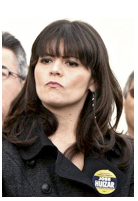 Just months later, Huizar agreed to settle a 2013 sexual harassment case brought by his former deputy chief of staff, Francine Godoy (photo left), who did not obtain a payout from the city, though the city did have to pony up tax dollars for Huizar’s legal fees. In April, the council had voted to approve up to $200,000 to the firm representing Huizar, though it was unclear whether the limit had been reached.
Just months later, Huizar agreed to settle a 2013 sexual harassment case brought by his former deputy chief of staff, Francine Godoy (photo left), who did not obtain a payout from the city, though the city did have to pony up tax dollars for Huizar’s legal fees. In April, the council had voted to approve up to $200,000 to the firm representing Huizar, though it was unclear whether the limit had been reached. 





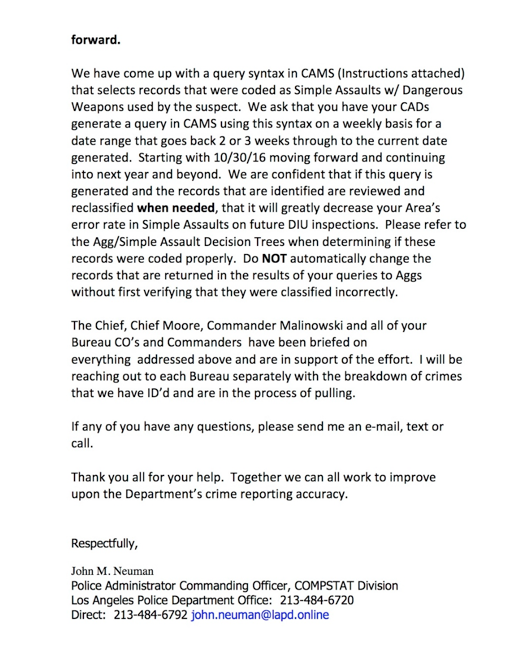

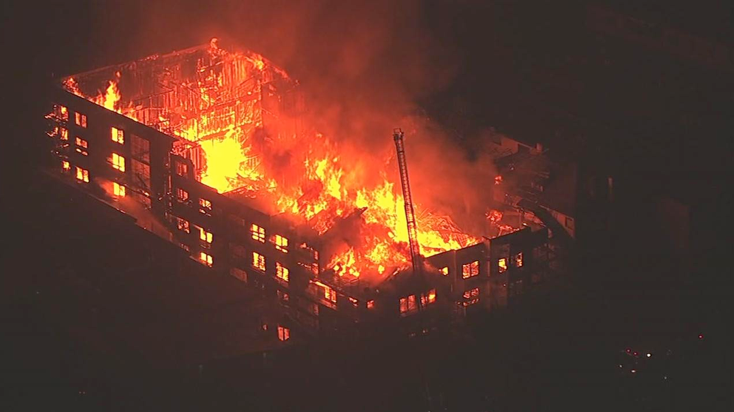
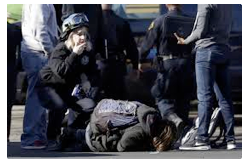 As cadaver searches continue on the property, tenants' rights activists and Bay Area residents say the tragedy happened because of a lack of access to affordable housing fueled in large part by the technology boom that has transformed San Francisco into one of the most expensive cities in the world. They say housing policies have continually failed to protect marginalized communities and force low-income people to take up increasingly unsafe residences.
As cadaver searches continue on the property, tenants' rights activists and Bay Area residents say the tragedy happened because of a lack of access to affordable housing fueled in large part by the technology boom that has transformed San Francisco into one of the most expensive cities in the world. They say housing policies have continually failed to protect marginalized communities and force low-income people to take up increasingly unsafe residences. Gabe Meline, online arts editor for KQED, wrote in an op-ed on Sunday titled "
Gabe Meline, online arts editor for KQED, wrote in an op-ed on Sunday titled "




 And the problem isn’t just with business. Last year, the neighborhood council opposed creating a bike lane on Westwood Boulevard. A bike lane would benefit students commuting from south of Wilshire Boulevard as well as people traveling to Westwood. Instead, the council somehow devised the logic that a bike lane would actually make the road more dangerous for cyclists. This is like saying, “Let’s not build lanes for cars; it’ll make the road more dangerous for them.” When pressed for explanation, Councilwoman Lisa Chapman did not respond for comment. Contact
And the problem isn’t just with business. Last year, the neighborhood council opposed creating a bike lane on Westwood Boulevard. A bike lane would benefit students commuting from south of Wilshire Boulevard as well as people traveling to Westwood. Instead, the council somehow devised the logic that a bike lane would actually make the road more dangerous for cyclists. This is like saying, “Let’s not build lanes for cars; it’ll make the road more dangerous for them.” When pressed for explanation, Councilwoman Lisa Chapman did not respond for comment. Contact 


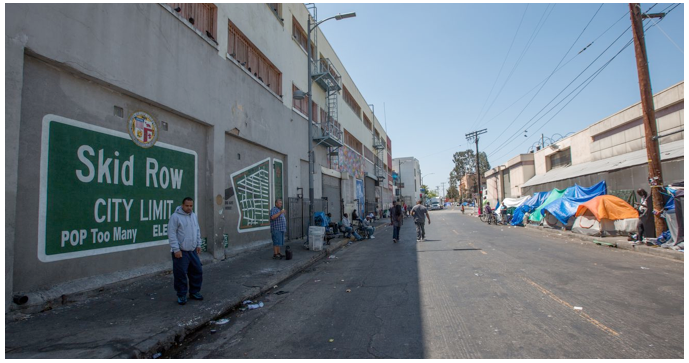



 The NII’s Coalition to Preserve LA, which did not respond to requests to comment for this article, believe a two-year moratorium on all developments seeking a zone change will light a fire under the Council.
The NII’s Coalition to Preserve LA, which did not respond to requests to comment for this article, believe a two-year moratorium on all developments seeking a zone change will light a fire under the Council.



















